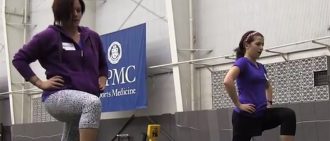Training for a marathon can seem like a very daunting task. Less than 1 percent of runners in the United States have completed one, so it is a bucket list item for many people. Running can decrease the risk of diabetes, depression, and heart disease while helping you maintain a healthy weight. If you’re new to running marathons, or recently made a goal to run one, you might be wondering where to start. We’ve compiled several of our best training articles to help you start to get ready for the upcoming DICK’S Sporting Goods Pittsburgh Marathon or UPMC Health Plan Pittsburgh Half Marathon.
In this article, you’ll learn:
- How to use cross training to your benefit for marathon prep
- Marathon prep Q&A with our experts
- The basics of training for a marathon
- The importance of dynamic warm-ups and cross training for runners
- Tips for recovery after you’ve completed your race
-
How to Use Cross Training for Marathon Prep
Training for a half or full marathon with a spring race day means the majority of your training falls in the winter. Cross training can help keep your muscles primed and your cardio up, especially when the weather forces you to take your workout indoors. Learn about the benefits of cross training and some suggestions for how to mix it up to prevent boredom.Learn More
-
Marathon Preparation Questions and Answers
We asked three of our sports medicine experts, Ron DeAngelo, CSCS, ATC, LAT; Kathleen Nachazel, ATC; and Brittany Patterson, PT, DPT, SCS, for their advice on how to approach some common running hurdles – injury and lack of motivation. Whether you’re an experienced runner or new to the sport, their tips can help you get ready for your best race.Learn More
-
Marathon Training 101 – Part 1
Learn about the seven phases of training for a marathon – base building, endurance, strength/speed, race prep, taper, race day, and recovery. Each phase is key to keeping your training on the right track and is important for staying injury-free throughout your training.Learn More
-
Runner’s Dynamic Warm-up and Cross Training
Dynamic warmups are important for activating all of the muscles in the body using active stretches and movements rather than static stretches and holds which can be dangerous for cold or tight muscles.Learn More
-
Marathon Recovery Tips for Race Day
You did it! You followed your training plan and completed the race, so now what? UPMC orthopaedic surgeon Aaron Mares, MD gives his recommendations for what to do immediately following the race, as well as in the days and weeks afterwards.Learn More





